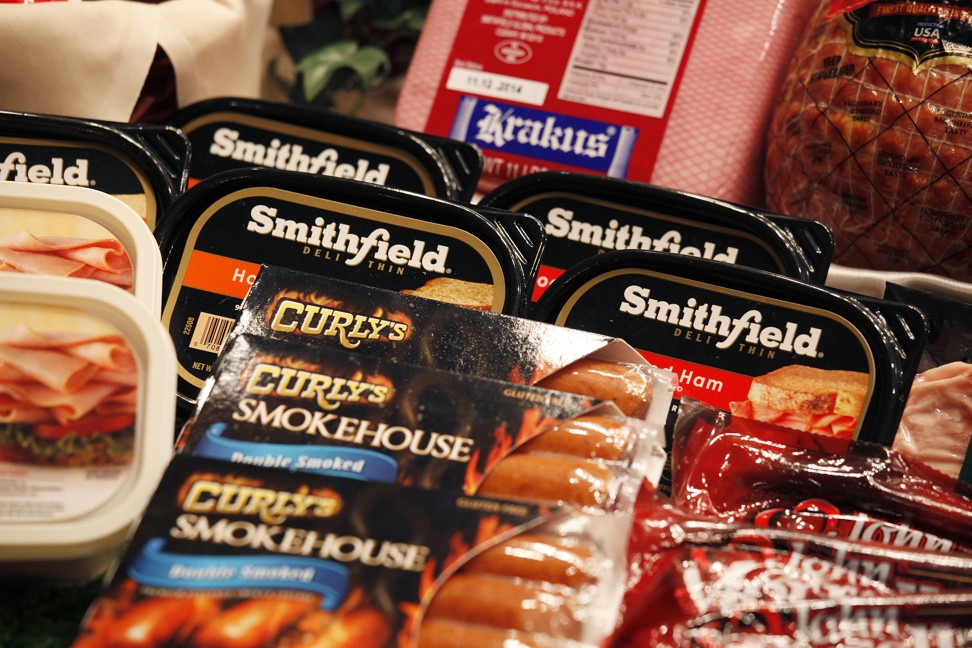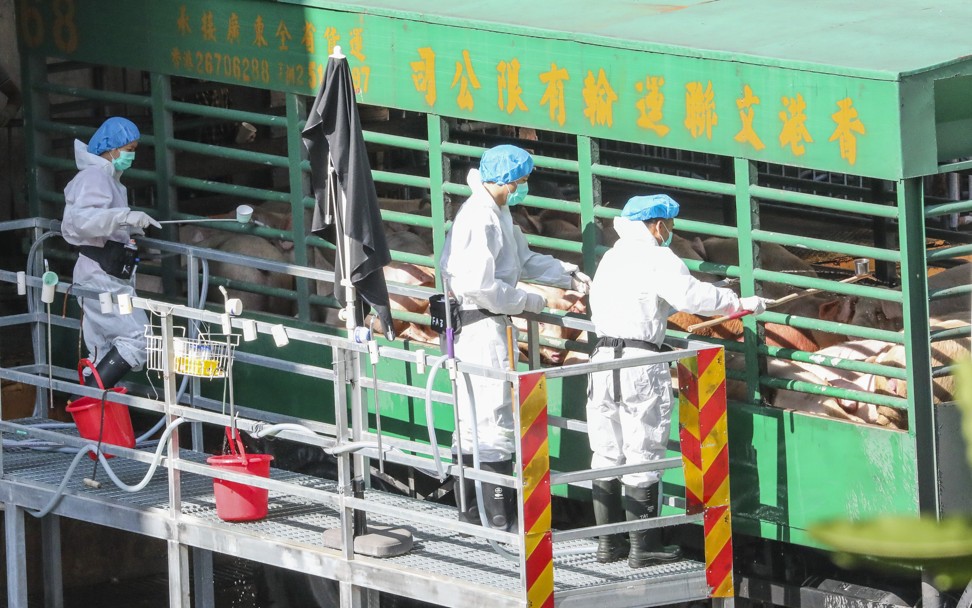
Pork price is likely to remain high in China as swine fever wipes out hog population – but that is music to WH Group’s ears
- Average prices may jump by 70 per cent to record levels in the second half of 2019, according to Chinese forecasts
- The prices of pork, fruits and vegetables – three key elements in the basket of goods for tracking inflation – soared in April at the fastest pace in six months
The price of pork is likely to remain high in China, the world’s largest consumer of the meat, as supplies may take months – and even years – to return to normal amid one of the worst outbreaks of African swine fever.
Pork prices may jump 70 per cent to record levels in the second half of 2019, according to Chinese government forecasts. Sustained high prices is music to the ears of the WH Group, the world’s largest producer of the meat and owner of Smithfield Foods of Virginia, whose first-quarter operating profit had taken a 10 per cent drop due to oversupply in the US hog market.
“It will be challenging to get the disease contained in a short time. China killed millions of pigs to contain the virus’ spread, so importers need to buy supplies from abroad to make up for it,” said Luis Chein group director at WH Group, during an interview with South China Morning Post. “We will increase imports of fresh port from US production base to China.”

China’s population of pigs will shrink by 134 million heads, or 20 per cent, this year, the US Department of Agriculture (USDA) said last month. That puts pressure on China to import the meat – estimated by the USDA to rise 41 per cent this year to 2.2 million tonnes – to make up for the shortfall.
China’s April pork imports jumped 24 per cent to 135,517 tonnes from last year, according to Chinese customs data published on May 23.

WH Group and its Smithfield unit operates farms across three continents. The company slaughters 33 million pigs every year in the US, 17 million hogs in China and five million more in Europe. Its farms and abattoirs in the US produce 3 million tonnes of fresh pork, a quarter of which is exported to 40 countries, mainly to China, Mexico, Japan and South Korea.
The company reduced its 2018 exports to China by nearly 46 per cent to 125,000 tonnes, following a decline in pork prices and a 62 per cent Chinese tariff as the US-China trade war gained momentum.
The cut in Chinese sales weighed on WH Group, causing its attributable profit to fall 21 per cent to US$196 million in the first quarter while the operating profit declined 10 per cent to US$341 million.
The company’s shares, which fell 11 per cent in the last 12 months, dropped by as much as 1.6 per cent today to an intraday low of HK$7.33 in Hong Kong.
China’s food prices jumped this month, putting a larger dent in household income and stoking inflationary pressures. The prices of pork, fruits and vegetables – three key elements in the basket of goods that make up China’s Consumer Price Index – rose at the fastest pace in six months in April.
The average price of pork jumped to 15.4 yuan per kilogram on May 28, compared with 13.36 yuan last August, according to the Chinese Ministry of Agriculture and Rural Affairs.
That is a stark reversal from 2018, when hog prices fell 9 per cent while the price of the meat declined by 10.6 per cent, according to USDA data.
“This year’s situation is definitely good for us,” Chein said. “We were very busy last year struggling to fight against the tough environment. This year, we are also busy, but we are happy as we are optimistic about our business performance this year.”

